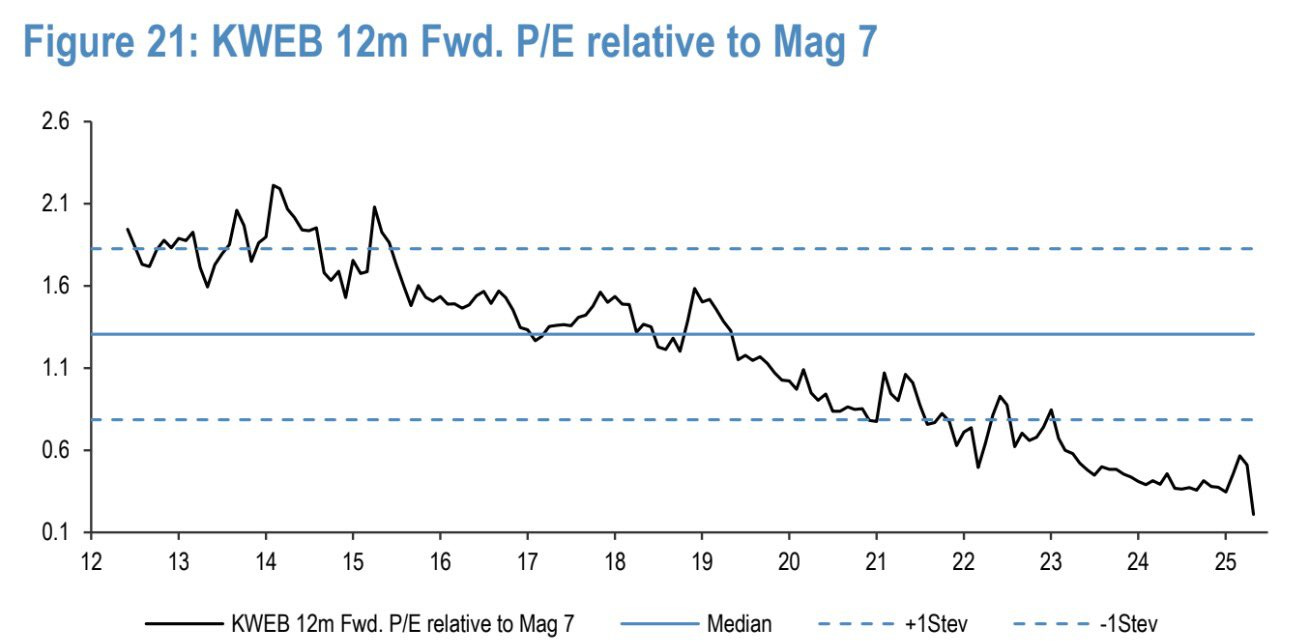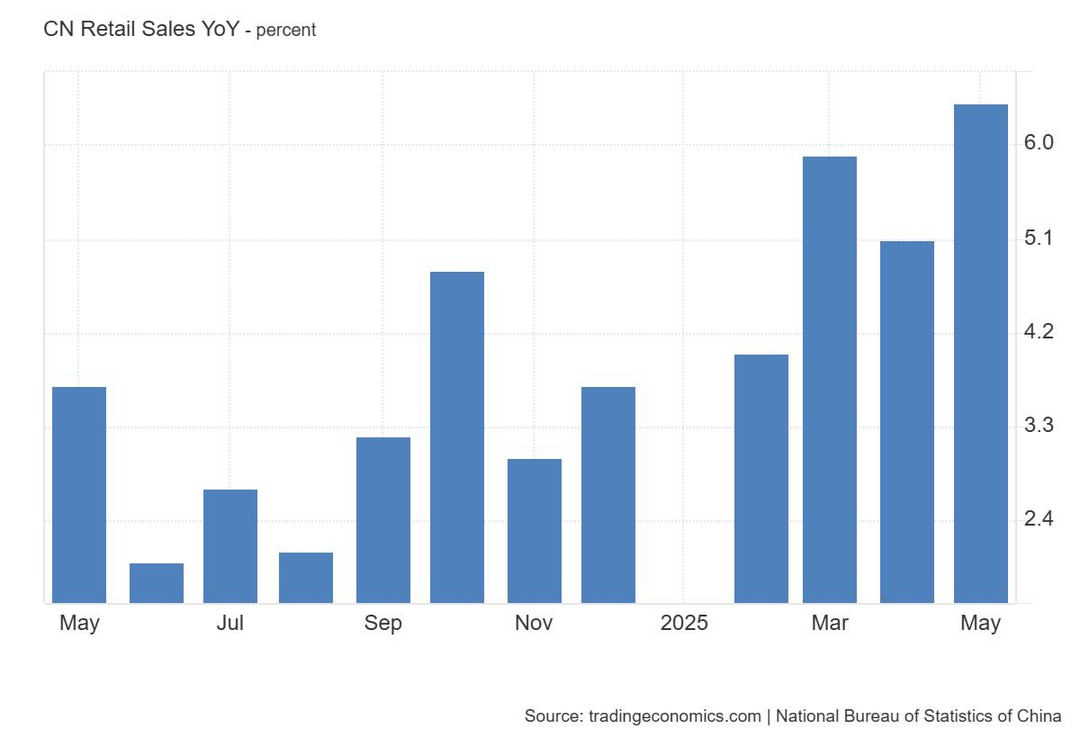Why I’m Still Long China
Policy is turning, consumption is rebounding, and tech is back in focus. The case for China is stronger than it looks.
Most readers know where I stand on China. I’ve been bullish on the long-term opportunity here for years—through the noise, through the drawdowns, and through the seemingly endless headlines about why “China is uninvestable.”
My largest positions include companies like Alibaba and Tencent, which I’ve held through some brutal sentiment cycles.
That conviction hasn’t been easy to maintain. The past couple years have tested even the most patient investors. Policy tightening. Regulatory pivots. Lockdowns. A property collapse. Weak consumer sentiment. There were moments when it felt like the whole market had given up on China ever returning to form.
But part of the reason I’ve stayed long is simple: valuations are dirt cheap.
These are world-class businesses—dominant platforms with massive scale and profitability—trading at single to low double digit earnings multiples and deep discounts to global peers. The dislocation has never made much sense to me. And now, with policy finally turning more supportive and macro signals starting to improve, the case is only getting stronger.
From Sentiment Collapse to Policy Support
Here in mid-2025, the narrative is starting to shift.
Slowly, quietly—and this time, with real policy support behind it—the Chinese consumer is coming back. Travel is rebounding. Retail is recovering. Car sales are climbing. And for the first time in years, the data and the policy message are aligned: Beijing wants consumption to lead, and it’s willing to do what it takes to make that happen.
This wasn’t always the case. Through 2022 and much of 2023, the government’s response to weak domestic demand was half-hearted. Stimulus measures were inconsistent and often aimed at stabilizing supply-side industrial production or propping up struggling real estate developers, rather than stimulating household demand.
Consumers, especially younger ones, remained wary. Unemployment lingered in the double digits. Savings rates soared. The mood was defensive, and spending reflected that.
But 2024 brought a notable pivot. And by mid-2025, that pivot has become policy doctrine.
The latest signal came in June, when Premier Li Qiang addressed the Asian Infrastructure Investment Bank’s annual meeting and declared that “domestic demand is the foundation of China’s economy.” Shortly afterward, a sweeping package of consumption-linked policies was unveiled.
This included ¥500 billion in relending directed at sectors with high-touch consumer activity—elder care, catering, education. At the same time, authorities expanded credit channels for consumption loans and launched a nationwide initiative encouraging trade-ins of home appliances, electronics, and even vehicles.
Unlike past announcements that took months to filter through, this time the effect has been swift. You can see it in the data. In May, retail sales rose 6.4% year-over-year, beating expectations and marking the fastest pace since late 2023.
That acceleration wasn’t solely driven by the early kickoff of the annual “618” e-commerce festival. Yes, platforms like Alibaba and JD.com leaned into discounts, but the real surprise came from offline categories: apparel, small appliances, and digital goods sold in lower-tier cities all saw strong increases. These are precisely the segments targeted by provincial trade-in subsidies and digital coupons—proof that the incentives are landing where they’re meant to.
Keep reading with a 7-day free trial
Subscribe to Coughlin Capital to keep reading this post and get 7 days of free access to the full post archives.





